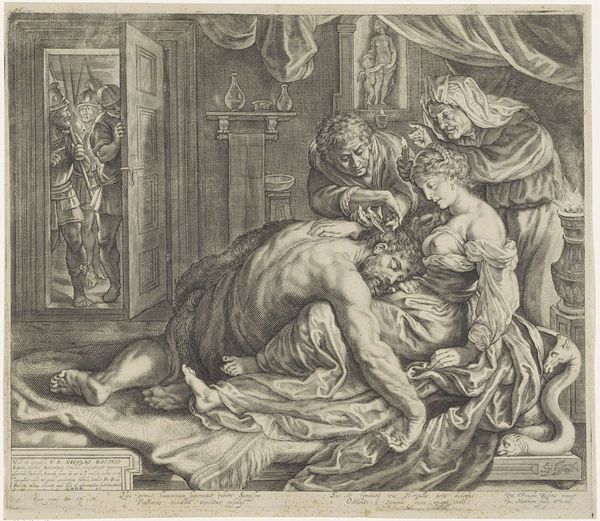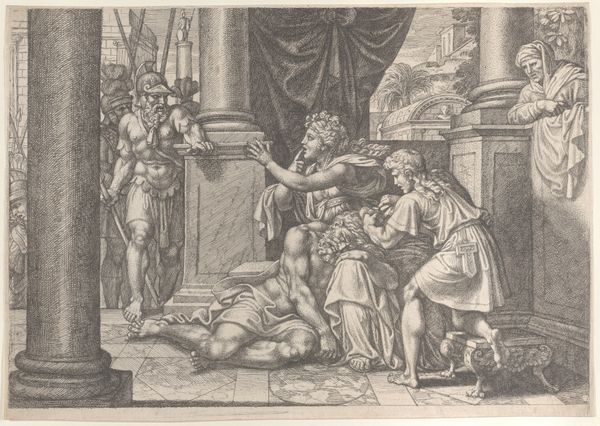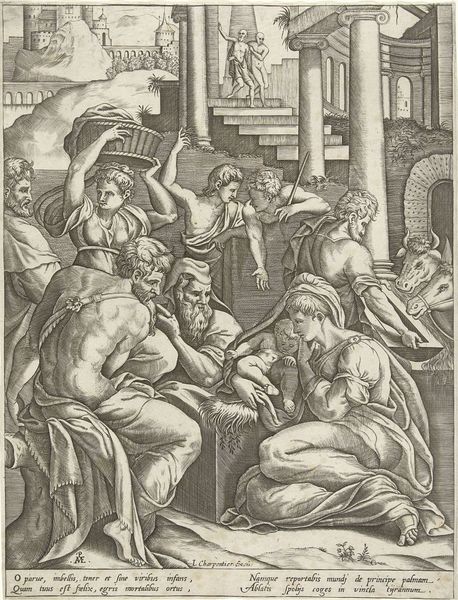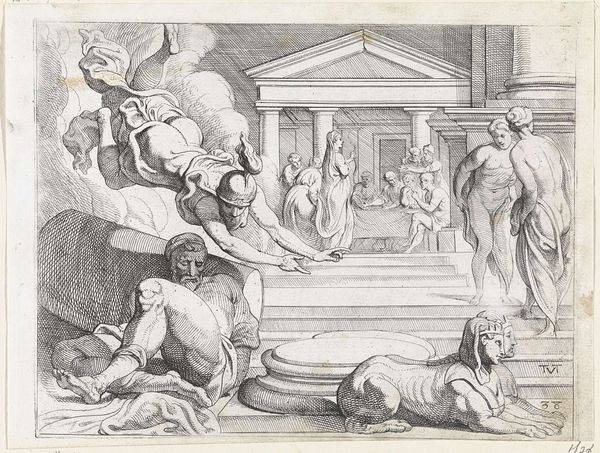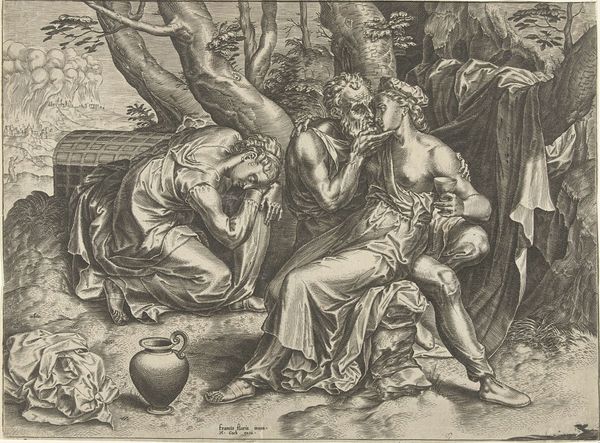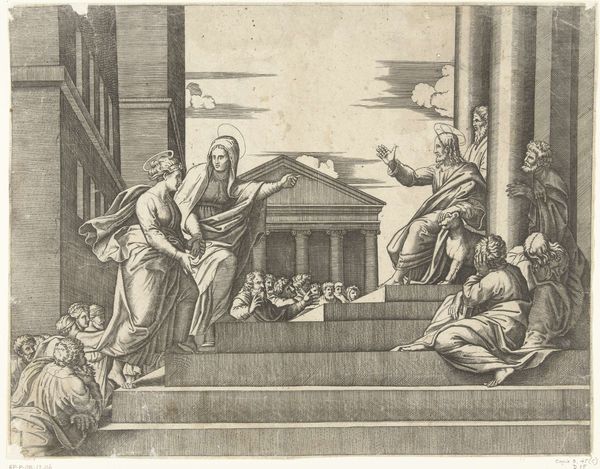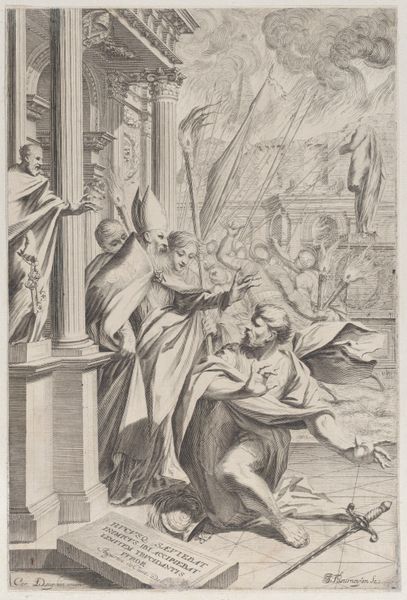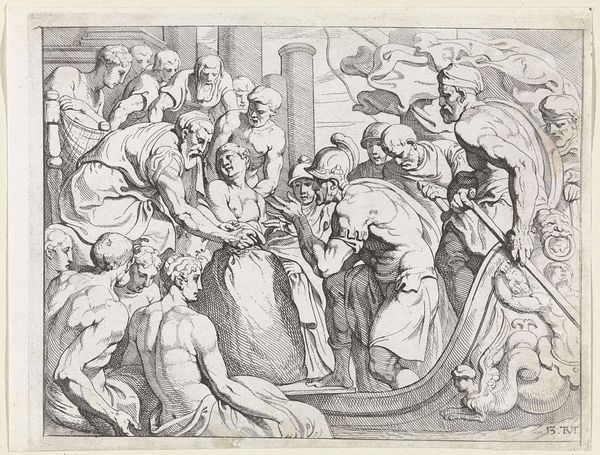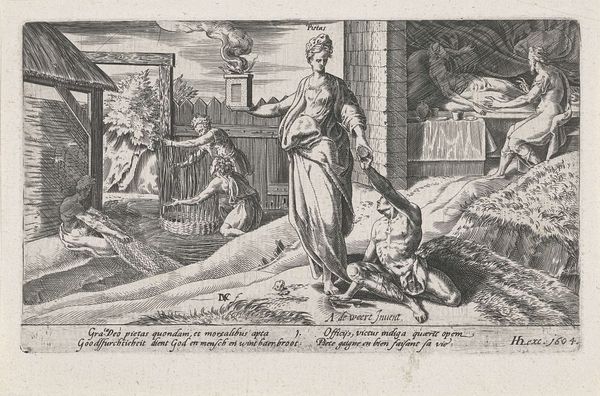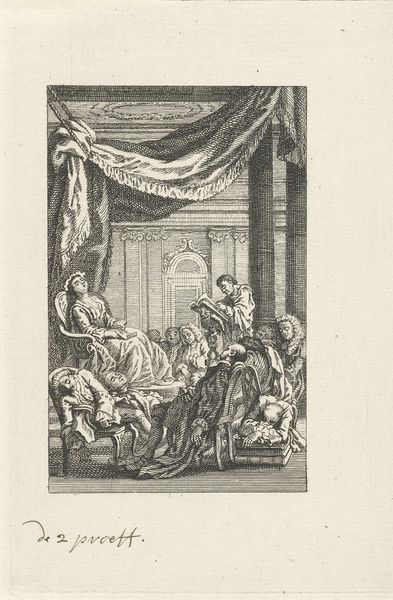
etching, intaglio, engraving
#
narrative-art
#
baroque
#
etching
#
intaglio
#
old engraving style
#
figuration
#
history-painting
#
engraving
Dimensions: height 143 mm, width 177 mm
Copyright: Rijks Museum: Open Domain
Editor: This is "A Daughter Feeding Her Mother in Prison," an etching and engraving by Zacharias Dolendo from 1606. It's a really striking image – very dramatic, very Baroque. The way the figures are rendered…it all feels very staged, like a scene from a play. What do you make of this? Curator: Indeed, its theatricality points to a deeper resonance. What strikes me is the iconography of imprisonment and liberation, constraint and nurturing. The starkness of the prison setting – those heavy chains and bars – juxtaposes profoundly with the intimate act of a daughter suckling her mother. This image doesn't simply depict a historical event; it taps into enduring narratives of sacrifice and familial duty. Do you recognize any similar stories this recalls? Editor: Maybe something biblical, or from classical mythology? It definitely feels like it's drawing on a bigger story. Curator: Precisely. This scene illustrates the Roman story of Pero and Cimon, embodying Caritas Romana. Cimon was condemned to death by starvation, and his daughter Pero visited him daily. A guard discovered she was keeping him alive with her own breast milk. Her selfless act moved the authorities, and Cimon was freed. The imagery became shorthand for filial piety. Consider how the artist has visually emphasized Pero's exposed breast. What emotions does that evoke in you? Editor: It’s powerful. It shows the extremity of the situation, the total selflessness. And how the guard witnesses all of this! Curator: The guard becomes a witness to the transformative power of human connection, the capacity for compassion to transcend even the most brutal of circumstances. Look closely – the single guard. Do you see any significance there? Editor: Now that you mention it...the single guard is also in the corner, as though hiding. It humanizes authority. All these tiny details…It's quite profound how symbols carry narratives. Thanks for explaining the historical and cultural background! Curator: It reveals cultural memory and continuity through visual symbols, offering powerful insight. I'm glad we could look at it together.
Comments
No comments
Be the first to comment and join the conversation on the ultimate creative platform.
